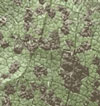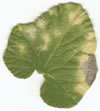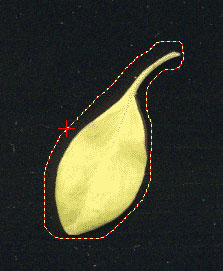| |
The WinFOLIA Software Program is available in three versions: Basic, Reg & Pro |
WinFOLIA Basic is our entry level low cost solution for leaf analysis. This version mimics the functionality of portable leaf area meters. It measures the leaf area, length and width in a simple manner as done with those devices (in the horizontal and vertical directions), perimeter, holes area and some other measurements (see table below).
WinFOLIA Reg has all the Basic version’s measurements plus some morphological measurements that are specific to leaves. E.g. it can differentiate the blade from the petiole so that you can choose to have the petiole included or not in the measurements of area, length and perimeter. It can measure width in different ways and lobe and apex angles too. This version also has more features, like the possibility of adding observations, doing user defined interactive measurements and a few more.
WinFOLIA Pro has all the Reg version’s measurements plus some extended morphological measurements (such as Fractals, envelope - convex hull, teeth...). This version also has color analysis that can be used for disease, necrosis and insect damage quantification.
|
| Measurements per WinFOLIA software version |
| Measurements |
Basic |
Reg |
Pro |
Description |
| Total Leaf Area |
√ |
√ |
√ |
|
| Individual Leaf Area |
√ |
√ |
√ |
|
| Leaf Length |
√ |
√ |
√ |
|
| Maximum & Average Width (horiz. & vertical) |
√ |
√ |
√ |
|
| Aspect Ratio |
√ |
√ |
√ |
Aspect ratio is the ratio of horizontal width to vertical length (sometimes called elongation factor). |
| Form Coefficient |
√ |
√ |
√ |
Form coefficient is a numerical value which grade the leaf shape between circular (shortest perimeter for a given area) and filliform (longest perimeter for a given area). |
| Holes Area (Total & Individual) |
√ |
√ |
√ |
Total and individual holes areas. Holes completely inside the blade (enclosed by it) are automatically measured. Those on the edge of it must be manually closed with image edition (as illustrated below). You can fill the hole with a different color or close the blade edge’s boundary. |
| |
|
|
|
|
| Individual Blade Area |
|
√ |
√ |
|
| Blade & Petiole Length |
|
√ |
√ |
|
| Maximum & Average Width (perp. to length) |
|
√ |
√ |
|
| Blade Perimeter |
|
√ |
√ |
|
| Blade Width at User Definable Positions |
|
√ |
√ |
|
| Lobe Angle at user Definable Positions |
|
√ |
√ |
Blade lobe and apex angles can be measured by the Reg and Pro versions at two different positions along the blade length. |
| User Definable Lengths & Angles (Interactive) |
|
√ |
√ |
Interactive user-definable lengths and angles allow to define custom measurements (that WinFOLIA cannot do automatically). E.g. to measure veins angle. |
| |
|
|
|
|
| Analysed Region Area |
|
|
√ |
|
| Envelope Area |
|
|
√ |
|
| Teeth Height, Width & Count |
|
|
√ |
|
| Fractals (for leaf shape analysis) |
|
|
√ |
|
| Color Analysis (Area per Color, Diseases) |
|
|
√ |
|
| |
|
|
|
|
|
The Reg and Pro versions can measure the area and length of the blade and the petiole separately or together (as a whole).
All versions can produce total and average leaf area (for all leaves in the image) as well as individual areas (per leaf).
All versions can measure perimeter (blade+petiole) but only the Reg and Pro versions can measure the blade perimeter without the petiole. |
|
Leaf or blade Maximum Length and Width can be measured in different ways. The simplest method is available in all versions. Leaf length is measured as the largest distance between the highest and lowest points belonging to the leaf in the vertical direction (on the same vertical line) and width is the distance between the leftmost and rightmost points in the horizontal direction (on the same horizontal line).
Length and Width can also be measured as the vertical and horizontal size of the leaf bounding box (distance between the leaf leftmost and rightmost boundary points), but unlike the above method, these do not have to be on the same line. Average width is the average of all widths measured along the leaf.
With the Reg and Pro versions, Length can be measured as the distance between the apex and petiole-blade junction (any orientation) and Width as the largest width perpendicular to blade length. These versions can also measure width at two different positions that you specify along the blade length. |
|
|
|
 |
 |
|
|
|
The envelope is the length of a line that goes from tooth to tooth on their apex. The area covered by the envelope can be measured by WinFOLIA Pro.
Teeth height, width and count.
Fractals are a mean of quantifying the complexity of a leaf shape. |
 |
Tooth
(yellow)
Envelope
(magenta) |
|
|
|
 |
|
|
|
WinFOLIA Pro can quantify the area per color, measure its dominant one and classify leaves in function of it or other criteria (it can classify a leaf as diseased if the diseased color group has the largest area or is larger than a given percentage). The leaf color classification can be seen on screen. Colors of interest are specified to WinFOLIA simply by clicking the image. Classes can be grouped in order to measure areas with more than one color (e.g. the diseased area may contain brown and yellow). The classification is done by true color analysis in 24 or 48 bits color space, not using a simple color threshold as in some other leaf analysis programs.
|
|
|
|
|
|
|
|
|
|
|
|
|
|
|
|
|
| Features per WinFOLIA software version |
| |
| Features |
Basic |
Reg |
Pro |
Description |
| Image edition |
√ |
√ |
√ |
Image edition allows to modify the image content to remove artifacts, debris or, as illustrated below, to fill in holes. You can choose the color to edit with by picking one present in the image or define your own. |
| Observations |
|
√ |
√ |
An observation is a mean of adding measurements not programmed in WinFOLIA or to indicate irregularities observed during measurement. A simple observation could be something like: Is Damaged. |
| Leaf or Folia disk analysis |
√ |
√ |
√ |
Although WinFOLIA is optimised for leaves, it can also analyse the area and shape of other objects such as foliar disks. For morphology or color analyses of generic objects (other than leaves) see our WinCAM program. |
| Debris filtering |
√ |
√ |
√ |
Debris filtering is available to prevent small particles from being considered as leaves during automatic analyses. Objects that matches user's debris criteria (based on area, length, width, form coefficient and/or color...) can be removed from the analysis |
| Interactive or batch analysis |
√ |
√ |
√ |
Batch analysis allows to analyse series of images without operator supervision. Note: Not all measurements can be done in batch. |
| Interactive or batch image acquisition |
√ |
√ |
√ |
Batch acquisition optimizes speed and minimizes operator intervention during the image acquisition process. |
| Leaf distribution graphic |
|
√ |
√ |
|
| User can override pixels classification |
√ |
√ |
√ |
|
| Analyse whole images/sub regions |
√ / √ |
√ / √ |
√ / √ |
The possibility of analysing only a part of the images adds flexibility. It allows to select specific regions of interest to be analysed and to ensure that only leaves are analysed (no debris, text, scale or objects other than leaves).All versions can do rectangular shapes, but the Reg and Pro versions have in addition circular and irregular shape made with the lasso tool. |
| Exclusion regions |
√ |
√ |
√ |
Similarly, you can define regions to be excluded from the analysis (exclusion regions).
Analysed and exclusion regions can be resized, moved and recreated (to analyse the same region over time or on different images). |
| |
|
|
|
|
|
| |
|
 |
|
 |
| In this example a damaged leaf boundary is closed with image edition using the pen tool so that holes on its edge can be measured automatically by WinFOLIA. |
In this example a damaged leaf area is filled in brown using image edition with the brush tool (a lasso is also available). Drawing a region the same color as the leaf allows to include it in leaf area while drawing it a different color allows to measure it in the holes or background area. |
|
| |
|
| |
| |
•The Pixels classification is the separation of image pixels (picture elements) into the leaf and background groups (a prerequisite for accurate measurements). This process can be done automatically (with user validation using different methods in function of the WinFOLIA version) or manually. If there are wrong classifications in some image areas, the operator can override it interactively by first selecting that area (outlining it) and changing the classification parameters. |
|
|
| |
|
•During the analysis you can view the leaf area (color or other morphological parameters) distribution into classes that you choose in a graphic above the image. |
| |
|
 |
|
 |
|
| |
|
| Miscellaneous |
Data produced by WinFOLIA are saved in standard ASCII text files. They can easily be opened by statistical or spreadsheet programs such as Microsoft Excel. The analysis settings are saved with the measurements data, which is useful to make verifications or quality control on the measurements. Furthermore, when an image is saved to a file after it has been analysed, the analysis is also saved with it and when such file is later opened in WinFOLIA, the analysis is recreated.
WinFOLIA comes with printed (and pdf) color manuals which are abundantly illustrated. Like all of Regent Instruments’ products, it is backed with prompt and competent technical support by email (messages are typically answered within one hour when they are received on working hours Eastern time America). WinFOLIA is updated regularly to add new features or to keep it on par with new operating systems.
WinFOLIA has a companion program called WinSEEDLE for conifer needles and seeds analysis. Both programs can share the same image acquisition hardware (you must specify it at purchase time). A rebate is offered when both products are purchased together. WinFOLIA and WinSEEDLE are members of a family of products sold by Regent Instruments for plant science research and analysis. Among the other products you will find WinRHIZO for root analysis and WinDENDRO for tree ring analysis. See the Product section of our web site for more information. |
| |
| XLFolia is a software program to classify and visualize data produced by WinFOLIA. It is made as a set of macros that runs in Excel (not included). These add a menu (named XLFolia) to Excel's standard menus. The latter contains commands to process WinFOLIA's data and create graphics very easily. Excel's standard commands remain available, allowing you to add your own processings and graphics. |
| |
|

